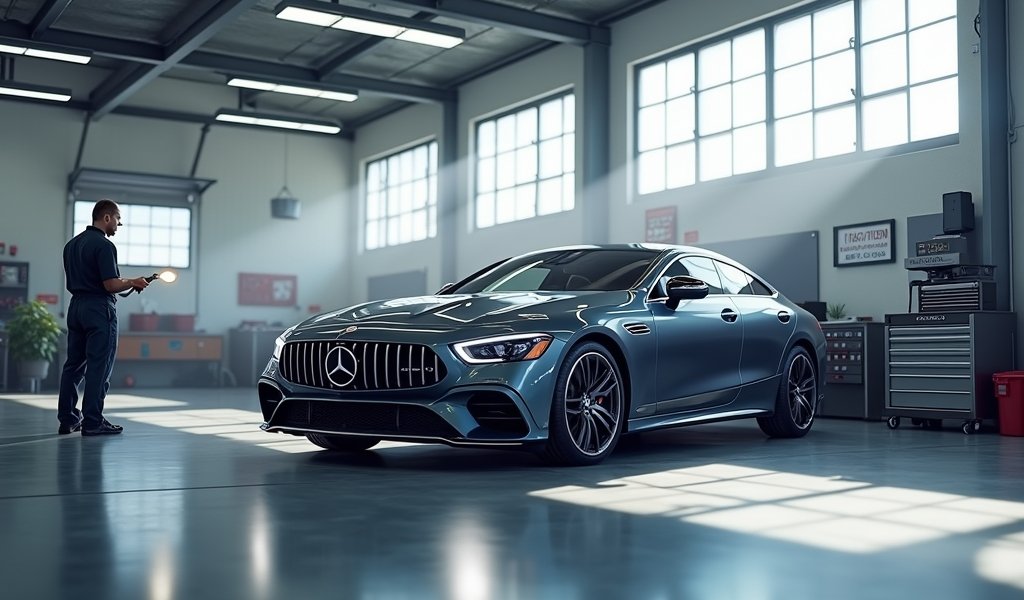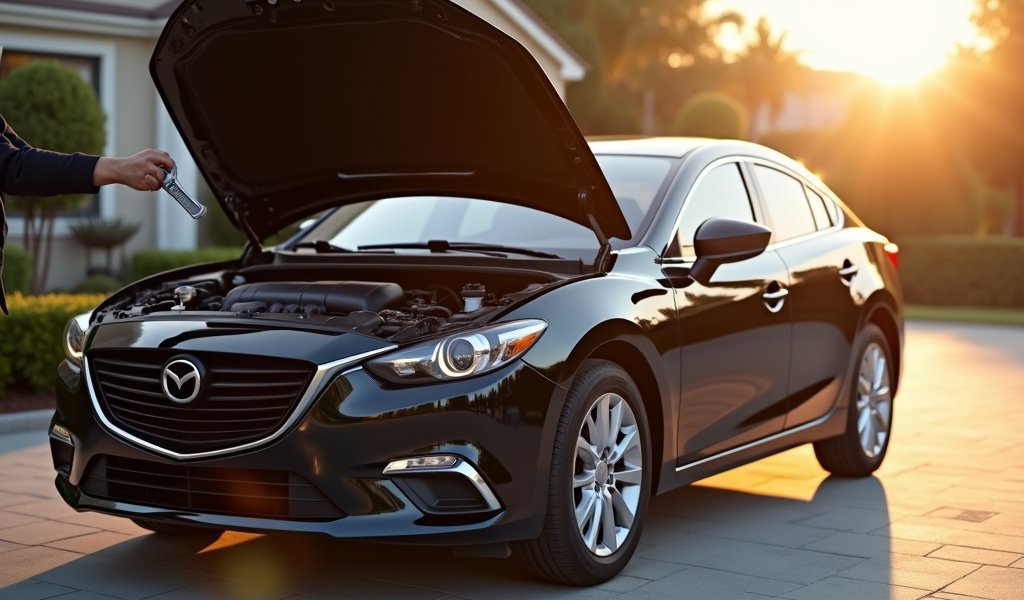Overview
Certified Pre-Owned (CPO) vehicles offer the sweet spot between new car reliability and used car savings, featuring rigorous inspections, manufacturer warranties, and special financing options. This guide covers how to find CPO vehicles near you, evaluate different manufacturer programs, conduct your own inspections, negotiate effectively, and avoid common pitfalls during the purchase process.
Table of Contents
- What Are Certified Pre-Owned Cars?
- Benefits of Buying Certified Pre-Owned
- How to Find CPO Vehicles Near You
- Evaluating CPO Programs
- Inspection Checklist
- Negotiating Your CPO Purchase
- Financing Your Certified Pre-Owned Vehicle
- Common Pitfalls to Avoid
- Conclusion
- Frequently Asked Questions
Looking to buy certified pre-owned cars near me? You’re making a smart move. After spending 20 years under the hood and guiding customers through vehicle purchases, I can tell you that certified pre-owned (CPO) vehicles offer that sweet spot between new car reliability and used car savings. They’re not just any used cars – they’re the cream of the crop, inspected and backed by manufacturer warranties that give you serious peace of mind.
In this comprehensive guide, I’ll walk you through everything you need to know about finding and purchasing a CPO vehicle in your local area. We’ll cover what makes these vehicles special, how to locate them, what to look for during inspection, and how to negotiate the best possible deal. By the end, you’ll have all the tools you need to confidently drive home in a certified pre-owned vehicle that fits both your needs and budget.
What Are Certified Pre-Owned Cars?
Certified pre-owned vehicles occupy a unique space in the automotive market. They’re previously owned cars that have undergone rigorous inspection processes according to manufacturer standards. Not every used vehicle qualifies – typically only newer models (less than 5-7 years old) with reasonable mileage (under 80,000 miles) are even considered for certification.
What separates a CPO vehicle from a regular used car is the comprehensive inspection process. Depending on the manufacturer, these inspections cover anywhere from 100 to 300+ points. Every major system gets thoroughly examined: engine, transmission, electrical systems, brakes, suspension, steering, and more. If something doesn’t meet the manufacturer’s standards, it gets repaired or replaced before certification.
Most CPO programs also require a clean vehicle history report. Any car with a questionable past – like severe accident damage, flood damage, or odometer tampering – gets disqualified immediately. This screening process ensures you’re getting a vehicle that’s not just functional, but genuinely reliable.
Beyond inspection, CPO vehicles come with extended warranties that kick in after the original factory warranty expires. These often cover the powertrain (engine, transmission, drive axle) for several years or tens of thousands of miles beyond the original warranty. Many programs throw in additional perks like roadside assistance, trip interruption coverage, and loaner cars during service visits.
Benefits of Buying Certified Pre-Owned
When you’re looking to buy certified pre-owned cars near me, understanding the advantages can help you decide if the CPO route is right for you. As someone who’s seen countless vehicles deteriorate prematurely due to poor maintenance, I can tell you the benefits are substantial.
First and foremost, you’ll enjoy significant peace of mind. That comprehensive inspection means major issues have been identified and addressed before you even see the vehicle. I’ve worked on both sides of this process, and the standards are genuinely high – dealers can’t cut corners if they want to maintain their certification program status with manufacturers.

How to Find CPO Vehicles Near You
Finding certified pre-owned vehicles in your area has never been easier. The digital age has blessed us with multiple tools to locate exactly what you’re looking for without driving all over town. I’ll share the methods I recommend to friends and family when they’re in the market.
Start with manufacturer websites. Nearly every major car brand has a dedicated CPO section where you can search inventory by zip code. These searches typically allow you to filter by model, features, price range, and more. The advantage here is that you’re seeing only vehicles that have passed the official certification process for that specific brand.
Third-party automotive websites offer another excellent avenue. Sites like AutoTrader’s certified section and Cars.com let you search across multiple brands at once. This is particularly helpful if you’re still deciding between different makes and models. You can cast a wider net while still limiting your search to certified vehicles.
Don’t overlook specialized used car websites that feature CPO inventory. Many allow you to save searches and set up email alerts for when vehicles matching your criteria become available. In today’s competitive market, this automatic notification system can give you a crucial head start on desirable vehicles.
Local dealership websites should also be on your radar. Many have inventory search tools that let you filter specifically for certified vehicles. The benefit here is that you can immediately see what’s available without having to make phone calls or in-person visits.
For the tech-savvy shopper, mobile apps from companies like TrueCar, CarGurus, and manufacturer-specific apps make searching on the go incredibly convenient. These apps often include helpful features like price comparison tools that show whether a particular CPO vehicle is fairly priced relative to the market.
When using any of these search methods, be specific about your requirements but not overly restrictive. Set parameters for must-have features, acceptable mileage ranges, and your budget. But remember that being too narrow might cause you to miss out on great vehicles that tick most, if not all, of your boxes.
Evaluating CPO Programs
Not all certified pre-owned programs are created equal. As a mechanic who’s serviced vehicles from virtually every manufacturer, I’ve seen firsthand the differences in quality and coverage. Before you start your search, it’s worth understanding which CPO programs offer the best value.
Warranty coverage varies significantly between manufacturers. Luxury brands like Lexus and Porsche tend to offer the most comprehensive warranties, sometimes extending coverage up to 10 years from the original purchase date. Mainstream brands typically offer less extensive coverage, but still significant improvements over standard used car warranties.
When comparing programs, look beyond just the length of coverage. Pay attention to:
- Deductibles (some programs have zero-deductible warranties, others charge $50-$100 per visit)
- Transferability (can you transfer the warranty to a new owner if you sell?)
- Powertrain vs. bumper-to-bumper coverage (what’s actually covered)
- Additional benefits (roadside assistance, trip interruption, rental car coverage)
- Inspection point count (more isn’t always better, but it can indicate thoroughness)
Manufacturers also differ in their vehicle eligibility requirements. Some accept vehicles up to 7 years old with 100,000 miles, while others are far more selective, only certifying vehicles less than 4 years old with under 50,000 miles. Generally, stricter eligibility requirements correlate with higher-quality CPO vehicles, but also higher prices.
The J.D. Power CPO program rankings can be a valuable resource for comparing different manufacturers’ offerings. These rankings consider factors like warranty length, inspection process, and additional benefits to determine which programs provide the best overall value.
If you’re considering a luxury vehicle, knowing when to buy is crucial. The best time of year to buy a car often coincides with new model releases, when dealers are motivated to move previous-generation certified vehicles off their lots.
Inspection Checklist
Even though certified pre-owned vehicles have already undergone professional inspection, I always advise conducting your own evaluation. Trust but verify – that’s been my mantra throughout my career. Here’s a practical checklist I’ve developed over years of helping friends and family evaluate potential purchases.
Before your test drive, take time for a thorough exterior inspection. Look for paint inconsistencies that might indicate repairs – check how light reflects off the surface, as differences in reflection can reveal repainted panels. Examine panel gaps for uniformity; uneven spacing often suggests previous damage repair.
Next, inspect the tires. Uneven wear patterns can tell you a lot about alignment issues or suspension problems. While certification should have addressed major concerns, subtle alignment issues might have been overlooked. Check tread depth across the width of each tire – differences could indicate underlying problems.
When you pop the hood, don’t be intimidated by what you see. Focus on these basics:
- Fluid levels and conditions (oil should be amber to light brown, not black or milky)
- Belt conditions (look for cracks, fraying, or glazing)
- Battery terminals (should be clean, not corroded)
- Visible leaks or staining that suggests recent leaks
Inside the vehicle, test every single button, switch, and feature. Check that all power windows, locks, and mirrors function properly. Test the climate control system on both hot and cold settings. Verify that all seat adjustments work smoothly and that infotainment features operate as expected.
During your test drive, pay attention to how the vehicle behaves in different conditions. Accelerate from a complete stop and listen for unusual noises. Test braking at various speeds – the pedal should feel firm and responsive, not spongy. Drive over rough pavement to check suspension response. Make tight turns in both directions to check steering responsiveness and potential CV joint issues.

Negotiating Your CPO Purchase
When you’re ready to buy certified pre-owned cars near me, solid negotiation skills can save you thousands. Despite what some salespeople might imply, CPO prices aren’t set in stone. With over two decades in the automotive world, I’ve seen countless successful negotiations, and they all follow similar patterns.
Start by doing your homework. Research the specific vehicle’s market value using tools like Kelley Blue Book and Edmunds. Pay attention to the CPO premium – typically $1,000-$3,000 above comparable non-certified vehicles. This premium is justified by the inspection, warranty, and additional benefits, but the base price should still be fair market value.
Always request the vehicle’s complete history report and certification inspection checklist. These documents reveal valuable negotiating information. If the vehicle had multiple owners, minor accidents (even properly repaired), or was previously a rental, these factors can justify a lower price despite certification.
When negotiating, focus on the out-the-door price rather than monthly payments. Dealers sometimes shift attention to monthly figures to obscure the total cost. Know your maximum budget before negotiations begin and stick to it firmly.
Don’t be afraid to compare offers from multiple dealerships. Let each know you’re shopping around – competition often yields better pricing. If you’re considering online car auction sites as an alternative, mention this during negotiations. Dealers recognize these platforms as legitimate competition.
Timing your purchase can significantly impact your leverage. End-of-month, end-of-quarter, and end-of-year periods typically find dealers more motivated to move inventory. Rainy days and weekdays also tend to be slower, giving you more of the salesperson’s attention and potentially more flexibility on pricing.
Remember that negotiations extend beyond the vehicle price. Warranty extensions, maintenance packages, and accessories are all negotiable items. Sometimes dealers have more flexibility with these add-ons than with the vehicle’s price itself, so consider the total value proposition.
If the dealership isn’t budging on price, ask about throwing in extras like the first three scheduled maintenance visits, a full tank of gas, or all-weather floor mats. These items cost the dealer relatively little but add real value for you.
Financing Your Certified Pre-Owned Vehicle
Securing the right financing is just as important as negotiating a good purchase price. CPO vehicles often qualify for special interest rates that fall between new and used car financing rates. This financing advantage is another benefit of the CPO program that shouldn’t be overlooked.
Always shop for financing before heading to the dealership. Get pre-approved through your bank or credit union to establish a baseline interest rate. This gives you leverage when reviewing the dealer’s financing offers and protects you from accepting unfavorable terms out of convenience.
Manufacturers frequently offer special CPO financing promotions. These promotional rates can sometimes match new car financing terms, particularly on recent model year vehicles. However, these special rates might limit your ability to negotiate on price, so calculate the total cost both ways before deciding.
When reviewing loan offers, pay attention to more than just the interest rate. Consider the loan term (shorter is generally better), prepayment penalties, and any required add-ons. Some dealers try to bundle extras like GAP insurance or extended warranties into financing – these should be considered separately on their merits, not accepted by default.
Down payments matter significantly with CPO purchases. Aim for at least 20% down if possible. This reduces your financing needs, might qualify you for better interest rates, and protects against negative equity if you need to sell the vehicle before paying off the loan.
Remember that dealership finance managers are also salespeople. Their job includes selling profitable add-ons like extended warranties, paint protection, and various insurance products. While some of these might have value, they’re rarely worth the asking price. Be prepared to firmly decline extras that don’t provide genuine value.
Common Pitfalls to Avoid
After years in the industry, I’ve seen buyers make the same mistakes repeatedly when purchasing certified pre-owned vehicles. Avoiding these common pitfalls will save you from potential headaches and financial strain.
First, never skip the vehicle history report review. Even though CPO vehicles should have clean histories, occasionally problematic vehicles slip through. Pay special attention to reported accidents, flood damage, odometer discrepancies, and title issues. If something seems suspicious, ask for clarification or simply walk away.
Be wary of assuming all repairs were made during certification. The inspection process doesn’t necessarily address every potential issue – it focuses on ensuring the vehicle meets minimum certification standards. Some dealers may perform only the repairs absolutely required by the program, leaving other items that might need attention soon.
Don’t confuse dealer-certified with manufacturer-certified. Some dealerships create their own “certification” programs that lack the rigorous standards and warranty coverage of manufacturer-backed CPO programs. Always verify you’re getting a genuine manufacturer-certified vehicle with the associated benefits.
Avoid emotional purchasing decisions. It’s easy to fall in love with a vehicle and ignore warning signs or overlook better options. Maintain a pragmatic approach throughout the process, even if it means walking away from a vehicle you like when the numbers or condition don’t make sense.
Finally, never rush through paperwork. Take time to read everything before signing, especially the warranty details and final sales contract. Dealers sometimes add unexpected fees or change terms at the last minute, counting on buyers being too excited or tired to notice. Always review the final numbers against what was verbally agreed upon.
Conclusion
Finding and purchasing the right certified pre-owned vehicle requires research, patience, and attention to detail – but the effort pays significant dividends. CPO vehicles offer a compelling middle ground between new car reliability and used car pricing, making them an excellent choice for value-conscious buyers who prioritize peace of mind.
Remember that the certification process, while thorough, isn’t a substitute for your own due diligence. Always conduct your personal inspection, request detailed documentation, and negotiate confidently based on market research. The right CPO car should meet your needs, fit your budget, and come with warranty protection that lets you drive with confidence.
By following the guidance in this article, you’re well-equipped to navigate the CPO market successfully. Whether you’re shopping at dealerships or exploring online options, you now have the knowledge to make an informed decision that balances quality, reliability, and value.
Ready to start your search? Begin by identifying the manufacturers with CPO programs that match your priorities, setting up alerts on automotive websites, and preparing your financing. With the right approach, your perfect certified pre-owned vehicle is waiting just around the corner.
Frequently Asked Questions
What’s the difference between certified pre-owned and regular used cars?
Certified pre-owned vehicles undergo comprehensive multi-point inspections according to manufacturer standards and come with extended warranty coverage. Regular used cars typically have no inspection requirements or warranty beyond any remaining original coverage.
Is the CPO premium worth paying?
For most buyers, the CPO premium ($1,000-$3,000) is worth it for the inspection, warranty coverage, and peace of mind. The value is especially strong for complex vehicles where repairs would be costly.
Can I negotiate the price of a certified pre-owned car?
Absolutely! CPO prices are negotiable just like other vehicles. Research market values to establish a fair target price and be prepared to walk away if the dealer won’t meet reasonable terms.
Do CPO vehicles come with a warranty?
Yes, all manufacturer CPO programs include warranty coverage that extends beyond the original factory warranty. Coverage length and specifics vary by manufacturer, typically ranging from 1-7 years of additional protection.
What’s the best way to finance a certified pre-owned purchase?
Get pre-approved through your bank or credit union before visiting dealerships, then compare their offer to special CPO financing from the manufacturer. Choose the option with the lowest total cost over the life of the loan, not just the lowest monthly payment.

